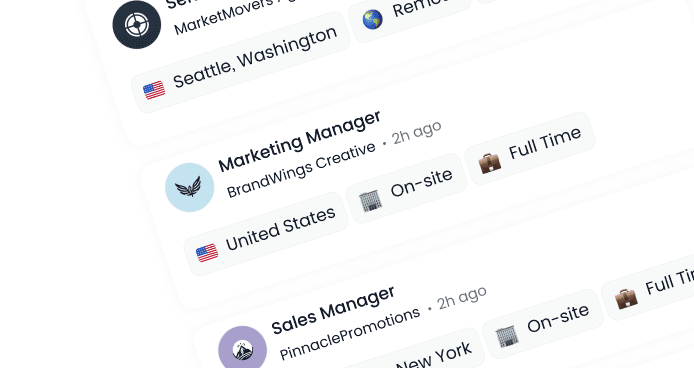Reduce Time-to-Hire – Keeping it Fast, Efficient, and Quality-Focused
Published:
July 14, 2025
All
AI Recruitment
Recruiting Tips
Video Interviews
Workforce Planning
Employer Branding
Want to hire faster and better? This one’s for you.
Introduction
Are you looking for ways to reduce time-to-hire? According to a recent report, the average time-to-hire globally is around 38 days. Meanwhile, organizations using digital hiring tools are hiring up to 26% faster. It should come as no surprise that time to hire is critical in today’s fast-paced and highly competitive market. In today’s fast-paced hiring landscape, time is everything.
In this blog we will look at aspects that will allow you to boost your hiring efficiency by leveraging recruitment automation and utilizing AI-driven hiring. So, without further ado, let’s begin.
Why is Quick Hiring Important?
Having a vacant position filled quickly is more than just an indicator that you are a well-renowned company. From saving money to ensuring productivity, there are many crucial factors that make quick hiring important:
Competitive Edge: As per some estimates, top candidates are often snatched up within the first 10 days. That is where a fast and efficient process can assist in getting the best person for the job before your competitors do.
Enhanced Candidate Experience: A hiring process that is smooth and engaging keeps the candidates informed, ensuring they are aware of where they stand. The fact is, no one likes to be ghosted. According to some studies, 66% of applicants say they accept an offer because of a positive interview experience.
Cost Savings: Every action a company does has a cost associated with it, and the hiring team working to get a resource is no exception. Plus, as long as there is a position vacant, someone else is usually covering to make up for it, and that can affect productivity.
Team Dynamics: Quick hiring reduces team pressure and sustains project momentum.
Understanding these improvements means investing in smart strategies that benefit both the organization and potential hires. That brings us to our next section utilizing technology and automation to ensure faster hiring.
Using Technology and Automation for Faster Hiring
Modern technology is revolutionizing recruiting. Tools such as an Applicant Tracking System (ATS) and AI-powered screening tools are drastically reducing the need for manual tasks, which are more time-consuming and laborious. Below are some tools and processes that are changing and improving how hiring is carried out:
Applicant Tracking System (ATS): An ATS centralizes job postings, candidate applications, and communication. Many companies report significant improvements in hiring efficiency when they implement an ATS. Such systems can automatically sort resumes, schedule interviews, and send alerts, decreasing administrative work.
AI-Driven Hiring: Today, AI-driven hiring tools quickly analyze resumes, matching candidate skills with job requirements. For example, companies using AI have reported reductions in screening time by up to 70%. This saves valuable recruiter hours and ensures only the best candidates are flagged for interviews.
Automated Interview Scheduling: Scheduling can become a major bottleneck in the hiring process. Automation tools now allow candidates to pick available slots, eliminating lengthy email exchanges. This reduces the administrative load by around 35% and speeds up the process significantly.
Talent Pipelines: Building a candidate pool before a role opens is key. A recruitment CRM or pipeline strategy allows you to nurture relationships, ensuring a pool of pre-vetted candidates is ready when you need to hire. This proactive approach supports both speed and quality.
Pro Tip: Always monitor the impact on candidate experience. Automation should complement human interaction rather than replace it.
Optimizing Job Postings and Sourcing
It all starts with getting candidates into the hiring queue faster. That is why it is important that you have optimized your job posting processes and sourcing strategy. We have mentioned the top five points to keep in mind when working to optimize this crucial strategy:
Clear Job Descriptions: Write clear, targeted descriptions that outline essential skills and responsibilities. This prevents unsuitable candidates from applying and speeds up the review process. Keep the language simple and inclusive.
Broad Distribution: Do not rely on a single job board. Use multiple channels such as LinkedIn, Indeed, and niche industry boards. A multi-channel approach increases the pool of qualified candidates quickly. Social media platforms also play a significant role in reaching a broader audience.
Simplify the Application Process: Ensure that your online application is mobile-friendly, loads quickly, and minimizes required fields. Many top companies now enable resume auto-fill features to reduce friction. A smooth, candidate-friendly application process directly contributes to a faster time-to-hire.
Encourage Employee Referrals: Referrals often result in faster hires, sometimes cutting the timeline by up to 10 days. They provide pre-vetted candidates who are likely to be a great cultural fit. Promote your referral programs with clear incentives.
Employer Branding: Strong employer branding attracts candidates and reduces the need for extensive vetting. Sharing employee testimonials, success stories, and behind-the-scenes content can make a significant impact on your talent pipeline.
Pro Tip: Carry out A/B testing for your job posting – try different job titles, phrases, and various call-to-actions. If you’re using multiple platforms, analyze metrics such as click-through rates and application completion rates to identify which variant performs best. This will allow you to optimize your postings and enhance hiring efficiency.

Streamlining the Interview Process
The interview process is a critical stage for both the employer and the candidate. This is the stage where companies try to vet top talent, and potential candidates give their all to show that they’re worth every penny. Needless to say, a structured and efficient interview process saves time and ensures that you select the right candidate.
Limit Interview Rounds: Research shows that excessive interview rounds cause candidate drop-offs. Generally, keeping interviews to three rounds—a screening call, a technical or skills interview, and a final cultural fit discussion—will suffice. This structure helps maintain momentum and avoids tiring both candidates and interviewers.
Structured Interviews: Standardize questions and use clear evaluation criteria. This allows quicker decision-making and better comparability between candidates.
Parallel Processing: Consider overlapping steps in your hiring process. For example, background checks can be initiated alongside final interviews to save precious time. Coordinating multiple interviews on the same day can also be effective for global teams.
Efficient Communication: Use digital tools to update candidates quickly. Automated status messages and real-time calendar integrations enhance the experience without sacrificing speed.
Remote and Asynchronous Interviews: With remote work on the rise, consider using AI-powered video interview platforms. Asynchronous video interviews allow candidates to record their responses at their convenience and enable hiring teams to review them promptly. This can cut the interview process from weeks to days.
Pro Tip: Implement a system for interviewers to enter short, concise feedback within a day to your Applicant Tracking System (ATS) or digital hiring platform. This allows for better engagement both at the interviewee and interviewer end, reducing the risk of losing high-quality candidates due to lengthy decision-making timelines.
Ensuring Speed with Quality
No doubt, quick hiring has numerous benefits; however, you need to be certain that it does not affect the quality of the entire process. This is critical to ensure your organization has the edge when it comes to employer branding and its acquisition of the best resources from the talent pool. Here are some best practices to ensure quality with efficiency:
Data-Driven Decisions: Use analytics to track both time-to-hire and quality-of-hire metrics. This data helps identify gaps in the process and areas for further improvement.
Use Assessments Wisely: Incorporate brief, relevant skill assessments early in the process. These can filter out underqualified candidates and maintain the integrity of your selection process without adding time.
Maintain Human Interaction: Even with a highly automated process, ensure there is a personal touch. Regular, clear communication reflects well on your employer brand and makes candidates feel valued.
Continuous Improvement: Gather feedback from candidates and hiring teams. Regular process reviews allow you to identify bottlenecks and keep enhancing your recruitment practices for both recruitment automation and overall hiring efficiency.
In Conclusion
Reducing time-to-hire is essential in today’s fast-paced global job market. By leveraging cutting-edge tools like an ATS, AI-driven hiring solutions such as DigitalHire, and automated scheduling, your organization can move faster without sacrificing the quality of hires. Streamlined interview processes, optimized job postings, and effective sourcing contribute greatly to improved hiring efficiency.
Accelerate your hiring with DigitalHire — the AI-powered Video Job Board designed to help you hire faster, smarter, and better. Start today!
FREE JOB POST
Looking to fill a position quickly? Post your job for free and reach top talent today!




